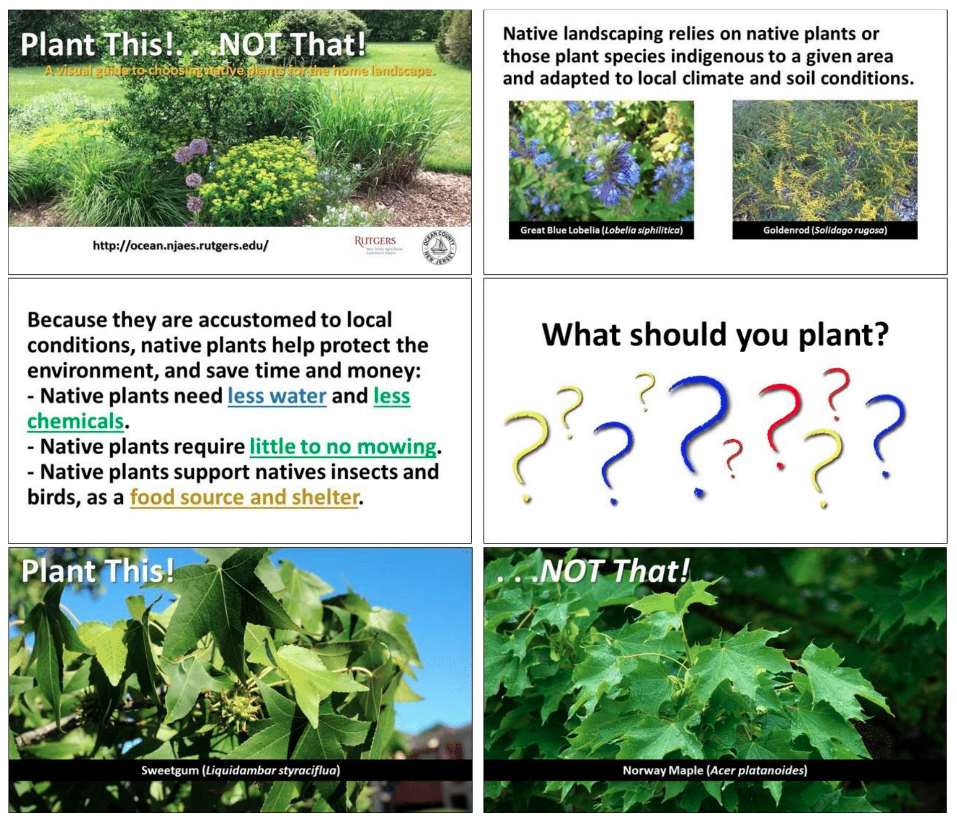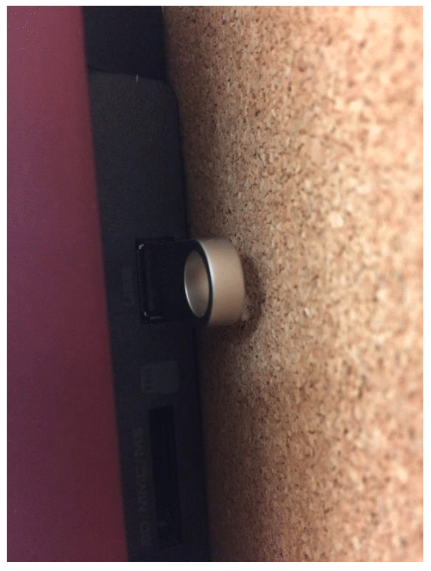 |
February 2019
|
February 2019 // Volume 57 // Number 1 // Tools of the Trade // v57-1tt4
Using Digital Picture Frames for Extension Displays
Abstract
Digital picture frames can bring a different dimension to Extension educators' educational displays and enhance the experience of viewers. Moreover, by combining multiple digital displays with written materials, the educator can increase his or her ability to reach more people than what occurs when only a single tabletop display at one event is used. This article includes a description of the use of a digital picture frame for conveying information on native plants, considerations related to choosing a digital picture frame, and lessons learned for setting up such displays.
Educational displays are an essential tool used by Extension professionals to disseminate information to the public. Although the traditional display setup is a tabletop display or poster, there are other means for displaying information, data, and/or pictures. One option is a digital picture frame. A digital picture frame is a small monitor designed to look like a standard picture frame that shows successive images in either a selected or random order. Many digital frames today are capable of playing sounds and music, as well as videos. With widespread use of digital images, and advances in digital frame technology, these devices are becoming easier to use and more affordable. If you are interested in incorporating this technology into your educational programming, the information, examples, and lessons learned conveyed herein are the basics you need to get started.
Advantages of Using Digital Picture Frames
A big advantage of using digital picture frames is that the images are easily shared across multiple devices, allowing you the ability to have displays running at several events and locations at once. This scenario is the closest we in Extension will come to fulfilling our dream of cloning ourselves!
Another advantage is that a digital frame can be left at a display location for an extended time. Leaving a digital frame display on a wall long term in a high-traffic location increases the number of people who see the display and, therefore, amplifies awareness of the display topic. Many digital picture frames are programmable; you can set one of these to have a start time and a shutdown time and thereby keep it from burning out too quickly due to continuous use.
An important note is that in addition to exhibiting the digital frame display, you should provide a brochure, a fact sheet, or other written material to fully engage the viewer (Mader, 1998). Using this approach not only allows you to increase the dissemination of information but also is useful for impact reporting as you can track the number of viewers of the display by tracking the number of associated materials distributed (Diem, 2003).
Choosing a Digital Picture Frame
A number of factors should be considered when you are choosing a digital frame. You can access online buying guides on digital picture frames through a simple Google search. A sampling of such sites is presented in the "Recommendations for Further Reading" section at the end of this article. As you choose a digital picture frame, keeping in mind your potential audience(s), topic(s), and display location(s) and the types of images you will display will help you create the best display possible.
How to Use a Digital Picture Frame—The Plant This! NOT That! Example
The same principles that go into designing an effective traditional tabletop or poster display (Ensle, 2008) are important for digital picture frame displays as well. You should assess the need for the display, thoroughly research and verify the information to be displayed, and focus on a key message (Ensle, 2008). Additionally, clear, high-quality images and large, easy-to-read text are crucial.
I developed the Plant This! NOT That! display to support the Jersey-Friendly Yards website (http://www.jerseyyards.org/). Jersey-Friendly Yards provides residents of New Jersey with lists of native plants for use in their landscapes and information about which invasive plants to avoid. The Plant This! NOT That! display is a quick visual guide that provides examples of native vegetation to plant ("Plant This") and plants that have the potential to become invasive ("Not That") (Figure 1).
Figure 1.
Selection of Images from the Plant This! NOT That! Display

Knowing I would be using a digital picture frame affected choices I made in developing the display. For example, it made sense to keep text to a minimum and to focus on the key point that native plants are better for the environment and the wallet. I created the 24 images in PowerPoint as slides and then saved them as JPEGs. Doing so kept the slides in the order I wanted for display. It also was necessary to consider the actual size of the frame's display area. The documentation for the frame I used lists the size as 10 in. wide, but the actual display area is 8.75 in. wide due to a photo matte in the frame. I sized each slide in PowerPoint to correspond to the size of the actual display area to ensure that there would be no distortion of the images when displayed. I transferred the images to a flash drive from which the frame plays the images (Figure 2). The frame displays each image for 15 s. The choices for the frame I used were 5 s or 15 s (Insignia, 2016). With 24 slides at 15 s per slide, the display is 6 min long.
Figure 2.
Close-Up of Flash Drive Inserted into Digital Frame

The frame is mounted on a display board in the Rutgers Cooperative Extension of Ocean County office (Figure 3). A fact sheet, "Incorporating Native Plants in Your Residential Landscape," accompanies the frame to provide detailed information. I keep track of the number of fact sheets taken as an estimate of the number of viewers educated by the display.
Figure 3.
Mounted Digital Frame with Accompanying Fact Sheet

Additional Considerations
Power
In researching which frame to purchase, I did not come across digital picture frames that run on batteries. Therefore, I had to ensure that a continuous power source was available for my display.
Security
My display was in a common area used by many groups (master gardeners, 4-H club members, etc.) and the public, so security had to be addressed. As with a standard picture frame, a digital frame can be mounted on a wall but is still easily removed. I secured the frame to the display board by screwing a plexiglass sheet over it (Figure 4), a setup that also prevented people accustomed to smartphones and tablets from touching the screen unnecessarily.
Figure 4.
View of Plexiglass Used to Secure Digital Frame to Display Board

Portability
Digital picture frames are small and lightweight, making them extremely portable and easy to set up quickly at any event location.
Conclusion
I have found the use of digital frames in displaying information to be a quick and easy way to reach many people at a single location. If you plan properly, you can use digital frames to create eye-catching displays that encourage viewers to linger and are especially effective if used in tandem with takeaway printed materials containing additional information. Many volunteers and members of the public who have seen the Plant This! NOT That! display have made positive comments and appreciate the new way to view Extension educational materials. The tips and example presented here may spark others' imaginations on how to incorporate this technology in Extension education endeavors.
Disclaimer
The mention or display of a trademark, proprietary product, or firm in text or figures does not constitute an endorsement by Rutgers Cooperative Extension and does not imply approval to the exclusion of other suitable products or firms. The use of any product(s) noted in this article is solely due to the decision of the author.
Recommendations for Further Reading
- PC Magazine's How to Buy a Digital Photo Frame, https://www.pcmag.com/article2/0,2817,2300977,00.asp
- Frame Bug's Tips for Buying a Digital Photo Frame Buyers Guide, http://www.framebug.com/digital_photo_frame_buyers_guide.htm
- The Fun Times Guide's Buying Digital Photo Frames: Tips for Choosing the Best Digital Photo Frame for You, https://photography.thefuntimesguide.com/buy-digital-photo-frame/
- Unique Photo's Digital Picture Frame Buying Guide, https://www.uniquephoto.com/digital-picture-frame-buying-guide
References
Diem, K. G. (2003). Program development in a political world—It's all about impact! Journal of Extension, 41(1), Article 1FEA6. Available at: https://joe.org/joe/2003february/a6.php
Ensle, K. M. (2008). Creating quick and easy displays for Extension events. Journal of Extension, 46(2), Article 2TOT2. Available at: https://www.joe.org/joe/2008april/tt2.php
Insignia. (2016). 10" digital photo frame with premium IPS panel: user guide. Richmond, MN: Insignia Products
Mader, S. (1998). 5-a-day roadside market project. Journal of Extension, 36(6), Article 6IAW. Available at: https://www.joe.org/joe/1998december/iw5.php



